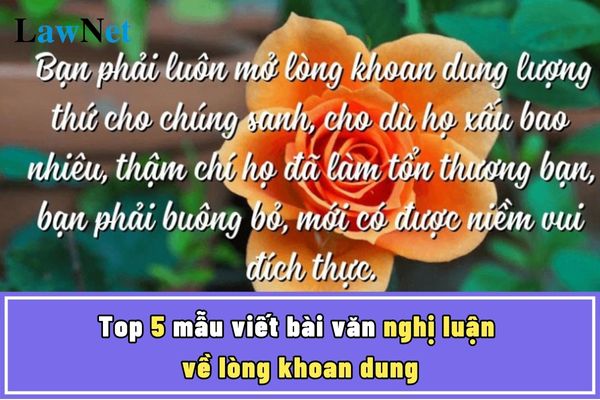Vietnam: What are the 07 steps to writing a social argumentative essay? What is the grade at which students initially learn to write social argumentative essays?
What are the 07 steps to writing a social argumentative essay in Vietnam?
Below are 7 steps to writing a social argumentative essay that will help students develop an effective essay by understanding the prompt and gathering ideas to present and finalize.
Step 1: Write an opening sentence, introducing the topic of the social argumentative essay
Depending on the required length of the social argumentative essay, you may choose to write a long or short introduction. However, currently, the social argumentative essay is only 200 words. Thus, when writing the introduction for a social argumentative essay, your opening sentence must be extremely concise. It should be only 1 to 2 sentences and directly introduce the topic of the essay.
Step 2: Explain the key terms
This includes concepts, special terms, their literal and figurative meanings (if any). From there, explain the overall meaning of the statement or assessment, the fable... quoted from the reading (for integrated comprehension questions). This step also serves as a transition to help you move to the analysis section.
Step 3: Analyze the causes of the matter
When analyzing the causes, the writer must present ideas from both aspects. This includes subjective and objective causes of a problem. Pay attention to each aspect, highlighting a maximum of 2 main causes to prevent the 200-word social argumentative essay from being overly broad and verbose. When presenting a system of causes, they must also be organized in a certain order.
Step 4: Analyze the impacts of the matter
Similar to analyzing the causes, when outlining the impacts of the event, try to present both positive and negative effects of that action on society as well as on each individual. Avoid presenting a one-sided impact to prevent bias in the 200-word social argumentative essay.
Step 5: Expand the topic for discussion
To have a more multidimensional and profound way of writing a social argumentative essay, you can use several techniques to expand the topic for discussion as follows:
- Explanation: Not only presenting the expressions of the status quo but also explaining that status quo with real-life examples.
- Relate to similar topics: For example, when discussing traffic accidents, you might provide statistics about other causes of death to compare and highlight the high mortality rate of traffic accidents.
- Reverse the matter: Propose an opposing hypothesis, then analyze, refute, and conclude.
Step 6: Emphasize personal viewpoints on the matter
Since it's a social argumentative essay, the writer must assert their stance (agree, disagree, or approve/refute). You can also choose to present a neutral opinion in a social argumentative essay but must fully mention the benefits and limitations of the matter and provide a deep analysis.
Step 7: Draw lessons for oneself and for society as a whole
From the current situation, benefits, and harms, the writer should summarize lessons for himself. The section presenting the lesson should be concise to avoid being long-winded.
Note: This information is for reference purposes only.

What are the 07 steps to writing a social argumentative essay in Vietnam? What is the grade at which students initially learn to write social argumentative essays? (Image from the Internet)
What is the grade at which students initially learn to write social argumentative essays?
According to Section 5 of the General Education Program for Literature issued along with Circular 32/2018/TT-BGDDT, the regulation is as follows:
Learning outcomes required after completing at the lower secondary level
a) Language proficiency
Know how to apply Vietnamese language knowledge along with personal experiences and reasoning abilities to understand texts; know how to read texts by type and category; understand both explicit and implicit content of the text.
Recognize and initially know how to analyze and evaluate the content and standout features of the expression form of the text; know how to compare this text with another text, relate to personal life experiences; thereby having one's way of seeing, thinking, and unique feelings about life, enriching one's spiritual life.
In grades 6 and 7: able to write narrative, descriptive, and expressive essays; initially know how to write argumentative, expository, and practical essays. In grades 8 and 9: able to write complete narrative, argumentative, and expository essays, following proper steps and combining different expression methods.
Thus, 6th-grade students initially learn to write social argumentative essays, presenting opinions on matters that concern them.
What are the objectives of the General Education Program for Literature for 6th-grade students in Vietnam?
According to Section 3 of the General Education Program for Literature issued along with Circular 32/2018/TT-BGDDT, the objectives of the General Education Program for Literature for 6th-grade students in Vietnam are specified as follows:
- Help students continue to develop the good qualities formed in primary school; enhance and expand development requirements regarding qualities with concrete expressions such as being proud of national history and literature; having dreams and aspirations, a spirit of self-learning and self-respect, a sense of citizenship, and respect for the law.
- Continue to develop general competencies, language proficiency, and literary competencies formed in primary school with higher required achievements.
Increase language proficiency with the requirement to distinguish between literary texts, argumentative texts, and informational texts; understand both the explicit and implicit content of various texts; able to write complete, coherent, logical narrative, descriptive, expressive, argumentative, expository, and practical essays, following the correct process and combining different expression methods; speak clearly and coherently; have a confident attitude appropriate to the communication context; listen with an appropriate attitude.
- Develop literary competence with the requirement to distinguish different genres of stories, poetry, prose, literary scripts and some specific sub-genres; recognize the characteristics of literary language, identify and analyze the impact of formal elements and artistic measures associated with each literary genre; recognize the expressive, cognitive, and aesthetic values; analyze the figurative nature, content, and form of literary works; able to create some products with literary value.










- What is the law on light reflection? What are details of the law on light reflection?
- What is the schedule of the AFF Cup 2024 (ASEAN Cup)? What are activities for physical education and sports in vocational education institutions in Vietnam?
- What is the schedule for the AFF Cup 2024 matches of the Vietnam National Team? Are students who are athletes in Vietnam eligible for a special exemption from high school graduation requirements?
- Vietnam: What are the guidelines for analysis of the poem "Tiến sĩ giấy"? What is the regulatory age of students entering lower secondary education?
- What is the location of Vietnam International Defense Exhibition 2024? Are students of all educational levels granted leave to visit the Vietnam International Defense Exhibition?
- What is the formula for calculating population density in Vietnam? What is the population density?
- Vietnam: What is the sample parent-teacher conference scenario at the end of the first semester of primary education? What are the regulations on the organization of parent committees?
- Vietnam: What is the sample outline for an essay on the analysis of the excerpt "The Last Leaf"? What are the assessment levels for learning results in the school year of 8th-grade students?
- What is the unit of power? When do students in Vietnam study the unit of power?
- What is the guidance for children to tell the story "Chuyện bốn mùa"? What is the age of students entering 2nd grade in Vietnam?

